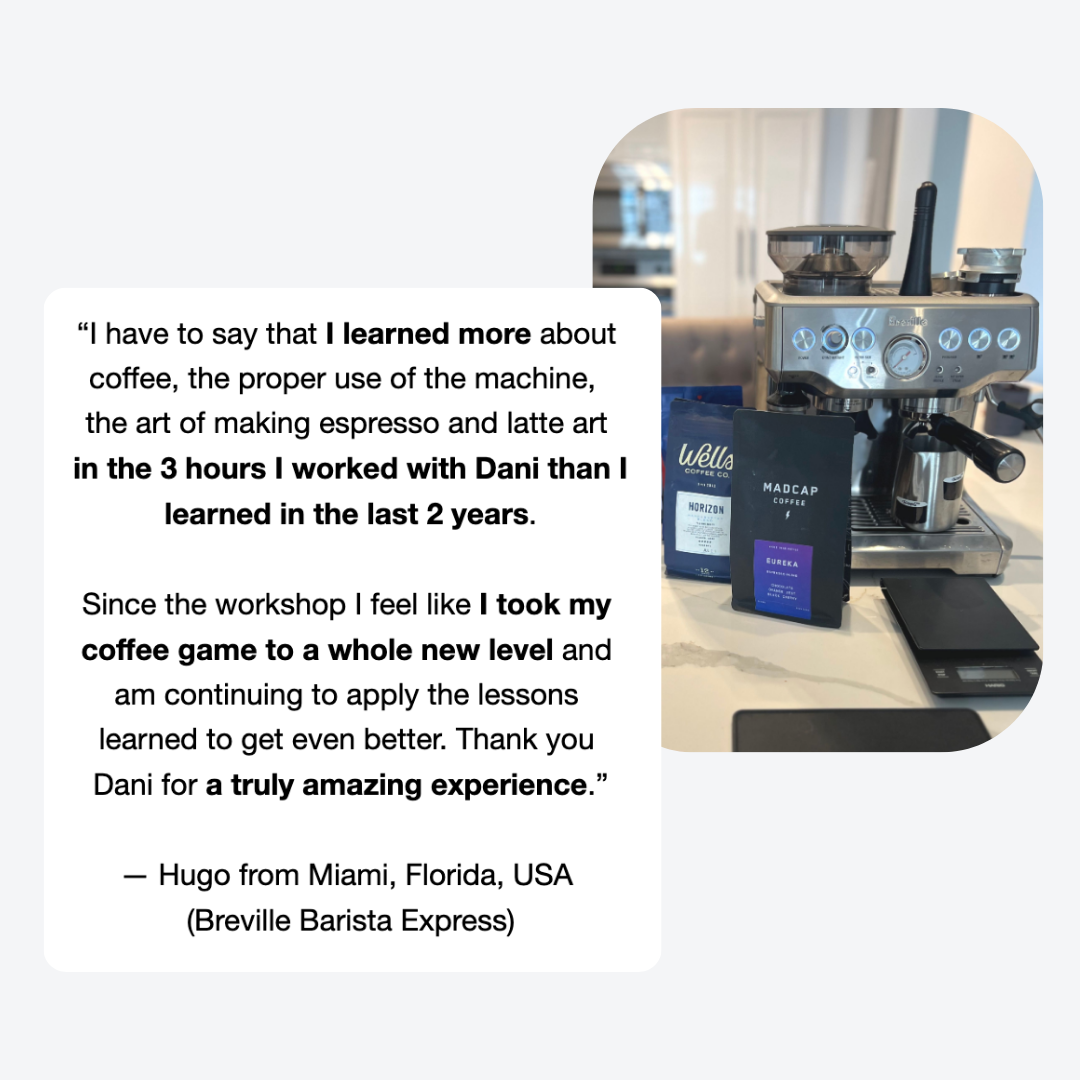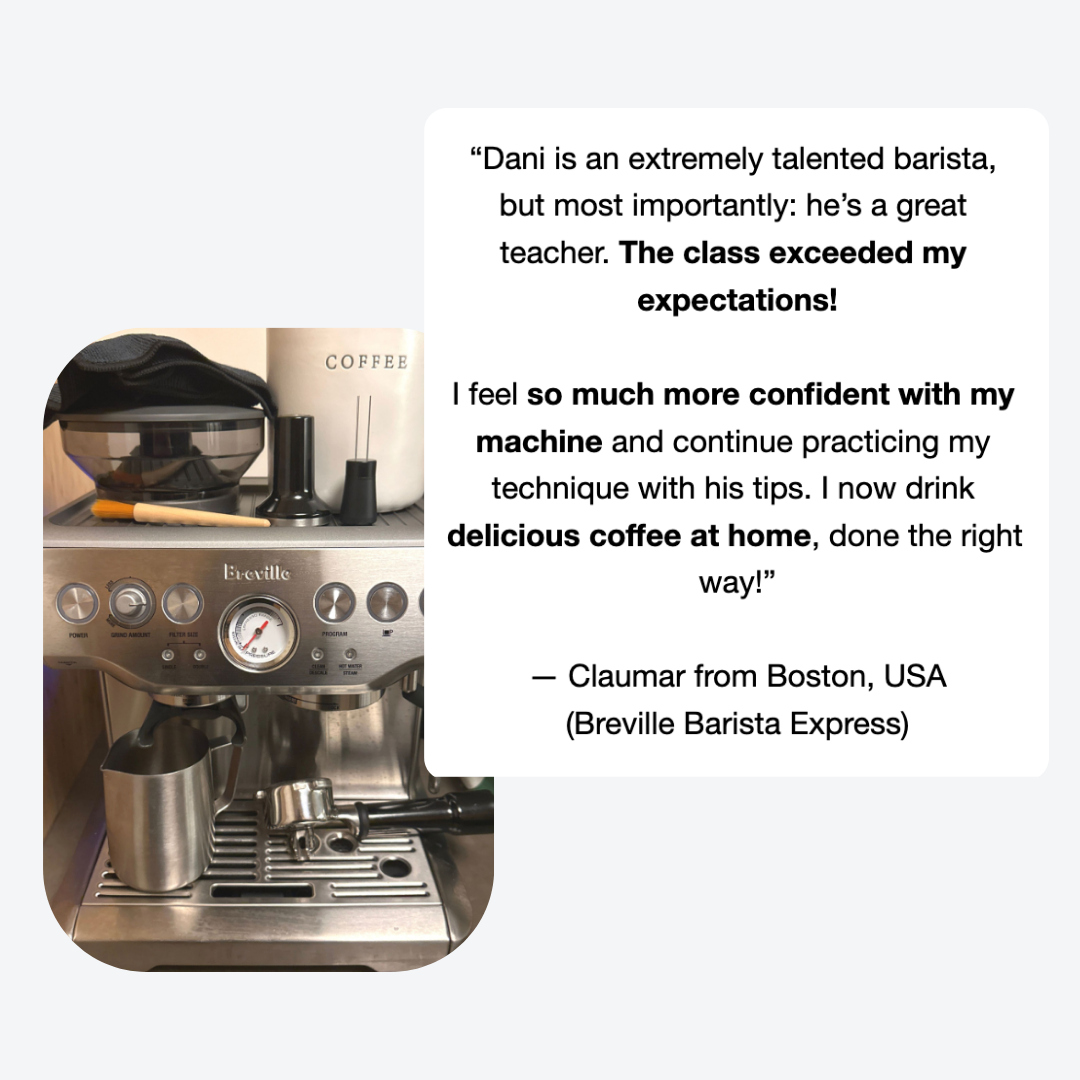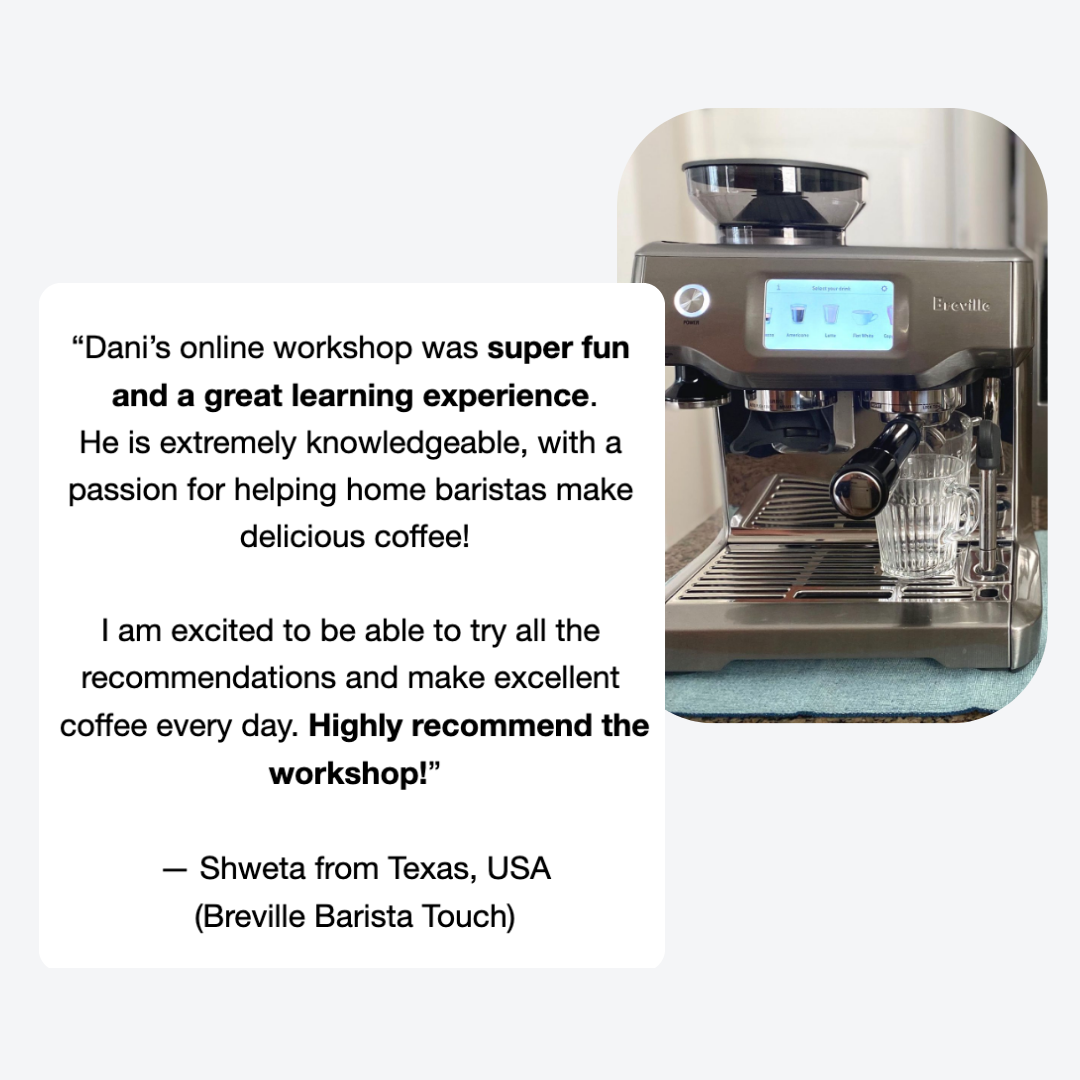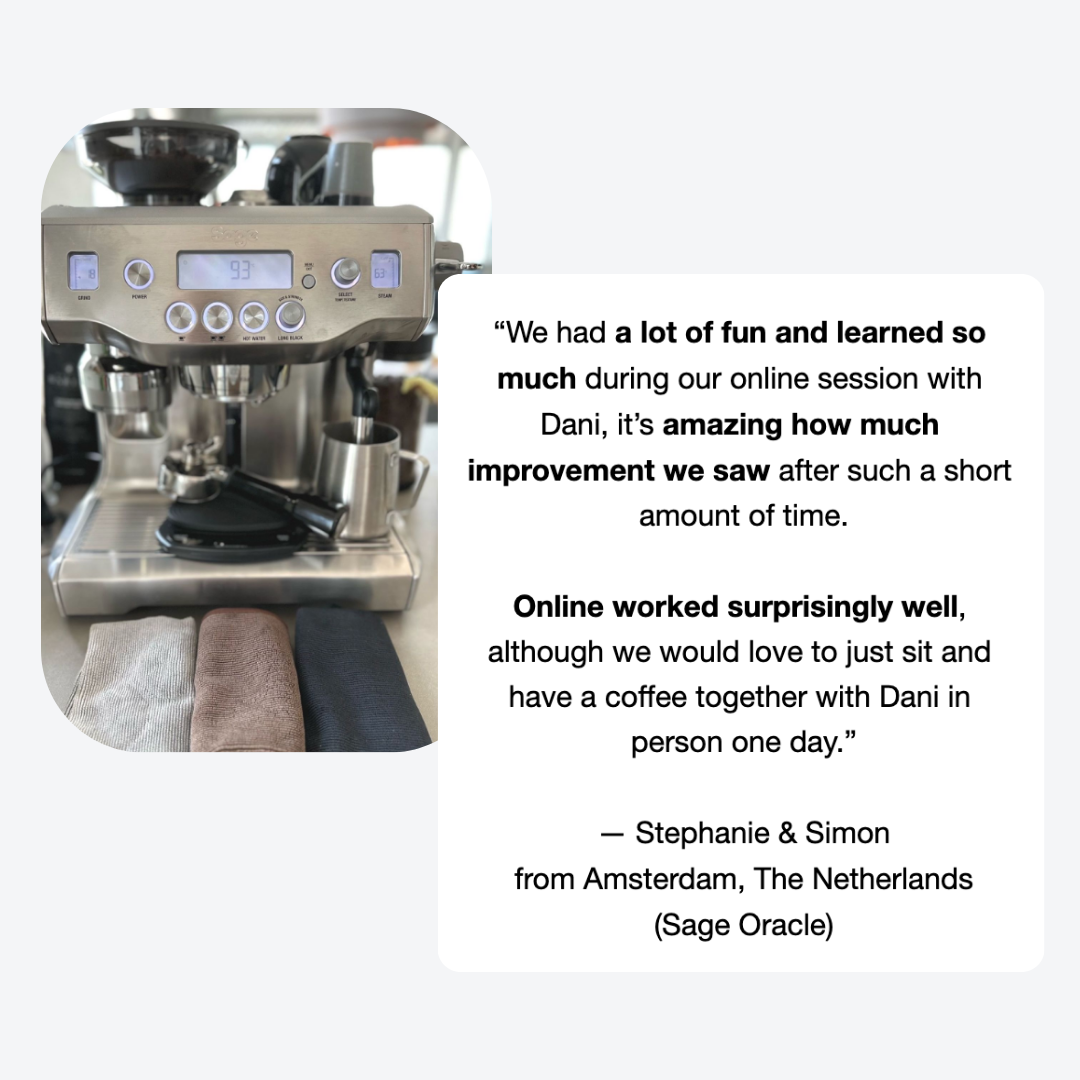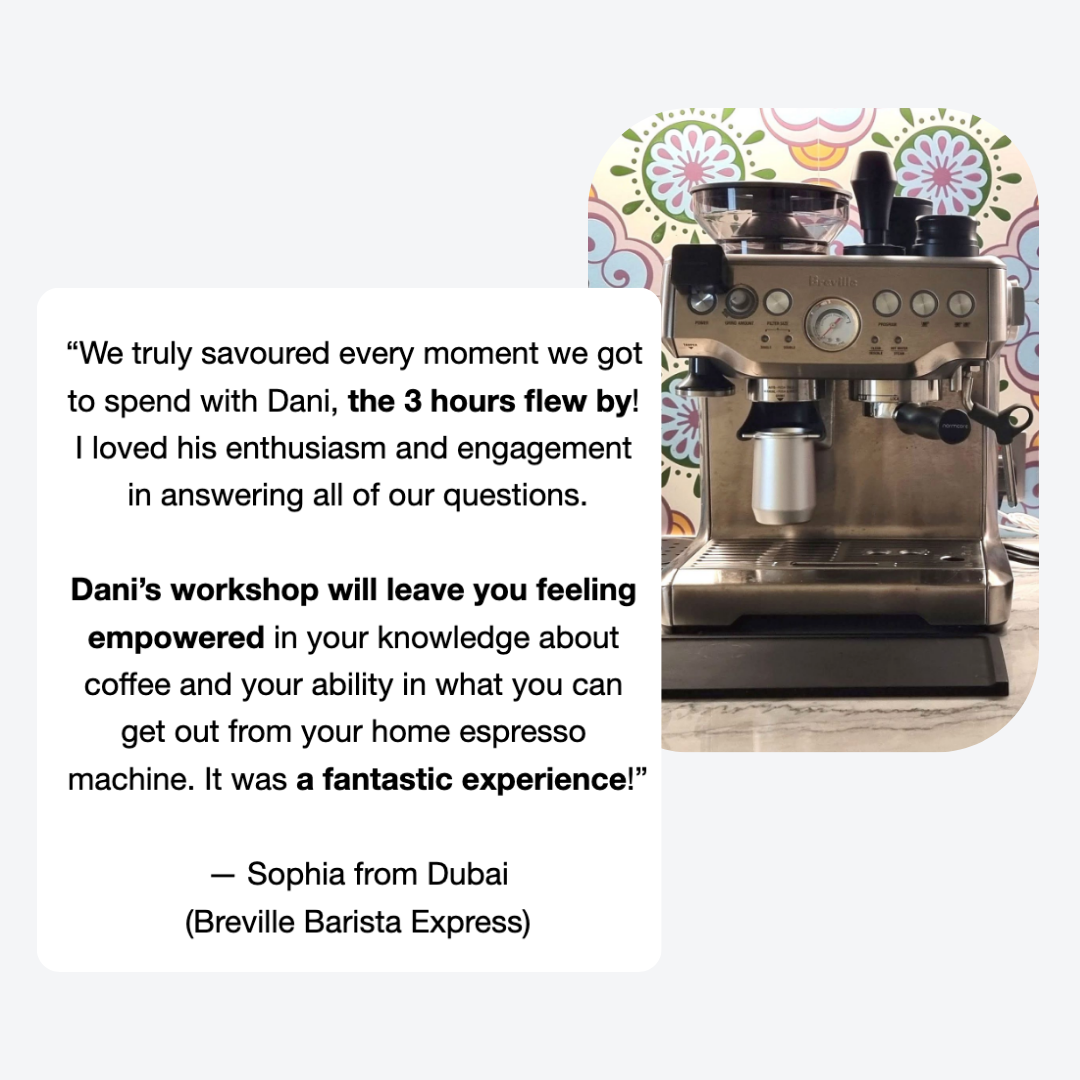How should you time espresso extraction?
Make tasty espressos at home
First of all, espresso extraction is the process that takes place when hot water is being pushed through finely ground coffee, causing desirable compounds (such as caffeine, carbohydrates, lipids etc.) to be extracted from those coffee grounds.
Why is it important to time espresso extraction?
Timing espresso extraction will ensure consistency and help you identify the next steps in the process of making your espresso, such as adjusting the grind size.
For example, let’s say you have a 18 grams dose of coffee grounds and a 36 grams espresso yield in the cup. But, if your espresso is coming out in 10 seconds, most likely it won’t taste too great (overwhelmingly acidic, poor to low sweetness, empty/hollow aftertaste). You need to make sure there’s sufficient contact time between the hot water and the coffee grounds in order to bring out that flavor and sweetness.
How should you time espresso extraction?
Generally speaking, there are two schools of thought out there, saying that you time espresso extraction either as soon as the pump on your espresso machine starts or at the first drip of espresso from the filter basket. This may confuse many home baristas, especially the ones just starting out.
That being said, you should start the timer on your coffee scale as soon as you press the button or flip the switch or lever of your espresso machine. That’s when the hot water will hit the dry bed of coffee grounds in the basket and the espresso extraction starts (although, we can argue, depending on the espresso machine, there could be a little variance in how long it takes for the water to reach the coffee grounds in the basket). Please note, pre-infusion is taken into account for total espresso shot time.
Taste your espresso shots
Flavor is king — without tasting, you can’t judge a coffee based on extraction time alone. So, apply the approach I just described above, but use extraction time as a rough guide rather and don’t get too stuck in it.
Depending on the country of harvest and style of roast, espresso extraction should fall somewhere between 25 and 35 seconds. But, of course, this is not set in stone and I would only use it as a starting point. I’ve had really tasty espressos extracted in 25 seconds, also some which took close to 40 seconds to extract.
Taste your espresso shots and be open to experimentation, you might be pleasantly surprised and you’ll also learn a whole lot in the process!
I hope you find these tips helpful and, if you’d like to dive deeper, you may consider our espresso and latte art home barista workshops. Happy brewing!



